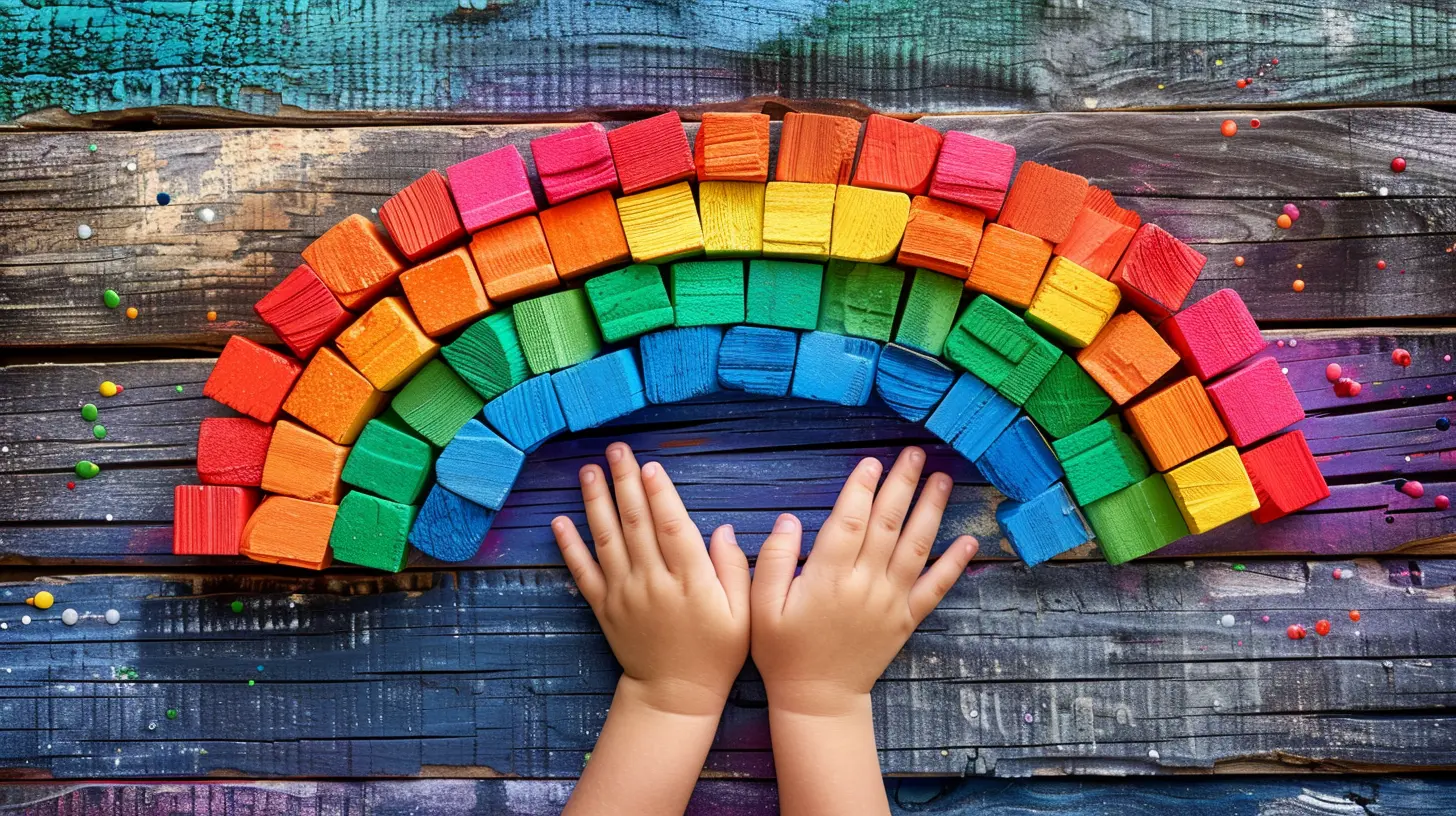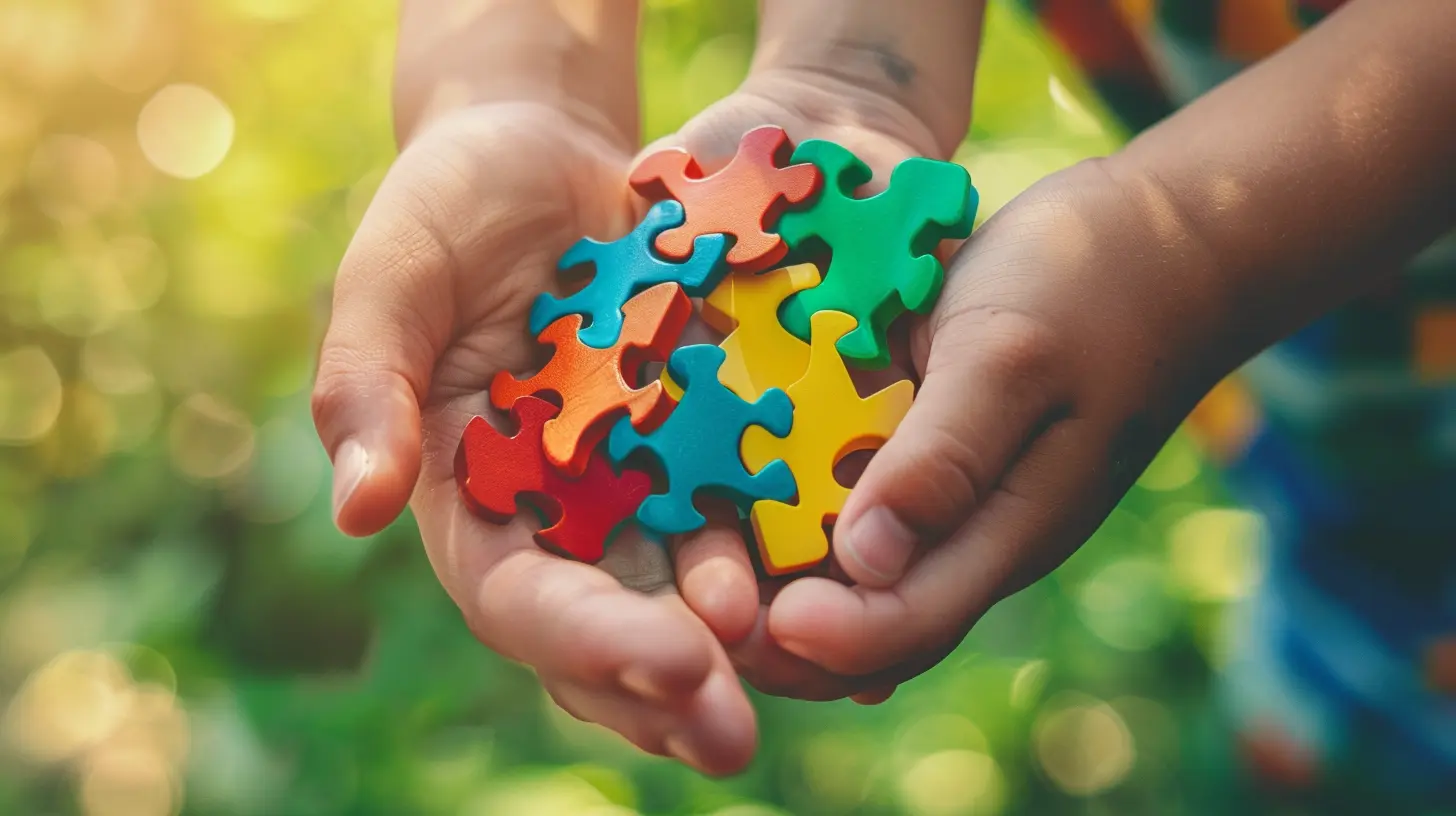Choosing the Right Therapy for Your Child: A Guide to Options
25 September 2025
Let’s be real—parenting doesn’t come with cheat codes, and when your child is struggling emotionally, socially, or behaviorally, it can feel like you’re flying blind. You’re not alone in this. Every parent wants what’s best for their child, especially when they’re hurting. Choosing the right therapy can feel like trying to read an ancient map without a compass. But don’t worry, we’re here to help you navigate this journey—step by step.

Why Therapy for Children Isn’t One-Size-Fits-All
You wouldn’t put your kid in shoes two sizes too big and expect them to run comfortably, right? The same goes for therapy—what works wonders for one child might not click with another. Kids are complex little humans with unique personalities, backgrounds, and challenges.So, how do you know what kind of therapy your child needs? Well, that’s where this guide comes in. We'll walk you through the different types of therapy available, how to choose the right one, and what to expect along the way.

Recognizing When Your Child Might Need Therapy
Let’s start with the big question most parents wonder but don't always say out loud: “Does my child really need therapy?”Here are some red flags that might point to a “yes”:
- Big, unexplained mood swings
- Withdrawing from friends or family
- Sudden drop in school performance
- Excessive fears or phobias
- Aggressive behavior or frequent tantrums (beyond what’s age-appropriate)
- Trouble sleeping or eating
- Saying things like “I wish I wasn’t here” or “I hate myself”
If these signs have been going on for a few weeks or longer, getting professional help is more than reasonable—it’s essential.

Understanding the Different Types of Child Therapy
Okay, so you've decided your child could benefit from therapy. Now comes the hard part: Which one? Let’s break down the most common types of therapy for children so it all makes a little more sense.1. Cognitive Behavioral Therapy (CBT)
Think of CBT as a mental toolbox. It helps kids identify their negative thoughts and swap them out with healthier, more realistic ones. It’s especially effective for:- Anxiety
- Depression
- OCD
- PTSD
In CBT sessions, kids learn how their thoughts affect their feelings and behaviors—so if your child tends to spiral into worst-case scenarios, this might be the ticket.
2. Play Therapy
Kids don’t always have the words to explain what’s bugging them—but give them a dollhouse or some art supplies, and suddenly, their inner world starts to come out.Play therapy is perfect for younger children, especially those under 10. Therapists use toys, games, drawing, and role-playing to help kids express themselves.
Great for:
- Trauma
- Grief
- Divorce adjustment
- Behavioral issues
3. Art Therapy
Similar to play therapy, but with a creative twist. Art therapy gives kids a safe space to draw, paint, or sculpt their emotions. And no—it’s not about being the next Picasso.It’s especially useful for:
- Children who have trouble verbalizing emotions
- Kids dealing with trauma or abuse
- Children on the autism spectrum
Art becomes a voice when words fall short.
4. Family Therapy
Sometimes, it’s not just the child who needs help—it's the family dynamic. Family therapy brings everyone to the table (literally) to identify patterns, improve communication, and build healthier relationships.Ideal for:
- Families going through separation or divorce
- Blended families
- Families dealing with substance abuse or mental health issues
Think of it as a team huddle to recalibrate the game plan.
5. Behavioral Therapy
If your kiddo is acting out—biting, hitting, breaking things—behavioral therapy focuses on reducing those behaviors through positive reinforcement and structure.Often used for:
- ADHD
- Oppositional Defiant Disorder (ODD)
- Autism Spectrum Disorder
It's a very structured, reward-based approach that encourages better decision-making.
6. Dialectical Behavior Therapy (DBT)
DBT is like CBT’s more emotionally intelligent cousin. It helps kids manage painful emotions and reduce conflict in relationships.It's great for older kids and teens dealing with:
- Self-harm
- Suicidal thoughts
- Intense emotional ups and downs
DBT teaches skills in mindfulness, emotional regulation, distress tolerance, and interpersonal effectiveness—fancy terms for staying calm, making good choices, and handling stress.
7. Speech and Language Therapy
Not all therapy is about emotions. If your child struggles with communication—stuttering, delayed speech, or social cues—speech therapy builds those crucial skills.This can also be super helpful for kids with:
- Autism
- Learning disorders
- Auditory processing disorder
8. Occupational Therapy (OT)
OT isn’t just about helping kids recover from injuries—it’s also about helping them master basic life skills. This can range from motor skills to sensory processing to organizational skills.Common reasons for OT include:
- Sensory Processing Disorder
- Autism
- Developmental delays
It’s like a workout for life skills—perfect for kids who find everyday tasks extra challenging.

How to Choose the Right Therapy for Your Child
Alright, we've covered the options. Now, how on earth do you pick the one that's right for your child?Step 1: Understand the Problem
Start by identifying the core issue. Is it behavior, emotion, learning, or communication? Ask yourself:- What’s the biggest challenge my child is facing right now?
- When did it start?
- How severe is it?
- How is it affecting their life?
Step 2: Talk to the Pros
Before making any decisions, consult your pediatrician. They can rule out medical issues and refer you to a specialist. A mental health evaluation from a child psychologist or psychiatrist can also help determine what type of therapy suits your child best.Step 3: Consider Your Child’s Age and Personality
For example:- Younger kids = Play or art therapy
- Tweens = CBT or expressive therapies
- Teens = CBT, DBT, or even group therapy
- Shy kids = One-on-one therapy
- Outgoing kids = Group or family sessions
Think of it like matchmaking—personality matters.
Step 4: Think Practical
- Can you afford it or use insurance?- Is the therapist nearby?
- Does your child feel comfortable with the therapist?
Finding a therapist your child clicks with is everything. Trust your gut—and theirs.
What to Expect From the First Few Sessions
Starting therapy can be nerve-wracking for both you and your child. The first few sessions are mostly about building trust and getting to know each other.Don’t expect groundbreaking breakthroughs right away. It’s more like planting seeds—you won’t see the fruit overnight, but growth is happening beneath the surface.
Encourage your child to be open, but don’t pressure them to share immediately. Let the connection develop naturally.
Also, your involvement matters. Most therapists will keep you updated and might even give you homework to help support your child’s progress at home.
Tips to Support Your Child Along the Way
- Be patient. Therapy is a marathon, not a sprint.- Keep an open line of communication—but don’t pry.
- Celebrate small wins. Every step forward counts.
- Stay involved. Your support can be the rocket fuel for your child’s healing.
Common Myths About Child Therapy (Let’s Debunk Them!)
Let’s clear the air on a few things:Myth 1: My child is too young for therapy.
Nope. Even toddlers can benefit from play therapy when guided by the right professional.
Myth 2: Therapy means my child is broken.
Absolutely not. Therapy is about building skills, not fixing defects.
Myth 3: Talking about problems makes them worse.
Actually, bottling things up tends to do more damage. Talking provides relief and solutions.
When Therapy Isn’t Enough (And That’s Okay)
Sometimes, therapy might need a little boost—like medication or school support services. That doesn’t mean therapy isn’t working. It means your child needs a multi-pronged approach.Always talk to your provider about the full range of options. A good therapist will guide you through it without judgment.
Final Thoughts: You’ve Got This
Choosing the right therapy for your child isn’t just about treatment—it’s about hope. It’s about giving your kid the tools they need to blossom, grow, and thrive. Yes, it can feel overwhelming, and yes, you might second-guess yourself, but here’s the truth:You’re already doing something amazing just by being here, reading this, and looking for answers. That makes you a rockstar parent in our book.
So take a deep breath. The path might be winding, but you're moving in the right direction.
all images in this post were generated using AI tools
Category:
Special NeedsAuthor:

Steven McLain
Discussion
rate this article
1 comments
Riven McFarlane
Empowering choices for our kids!
September 28, 2025 at 3:04 PM

Steven McLain
Thank you! Empowering parents to make informed choices is crucial for our children's well-being.


